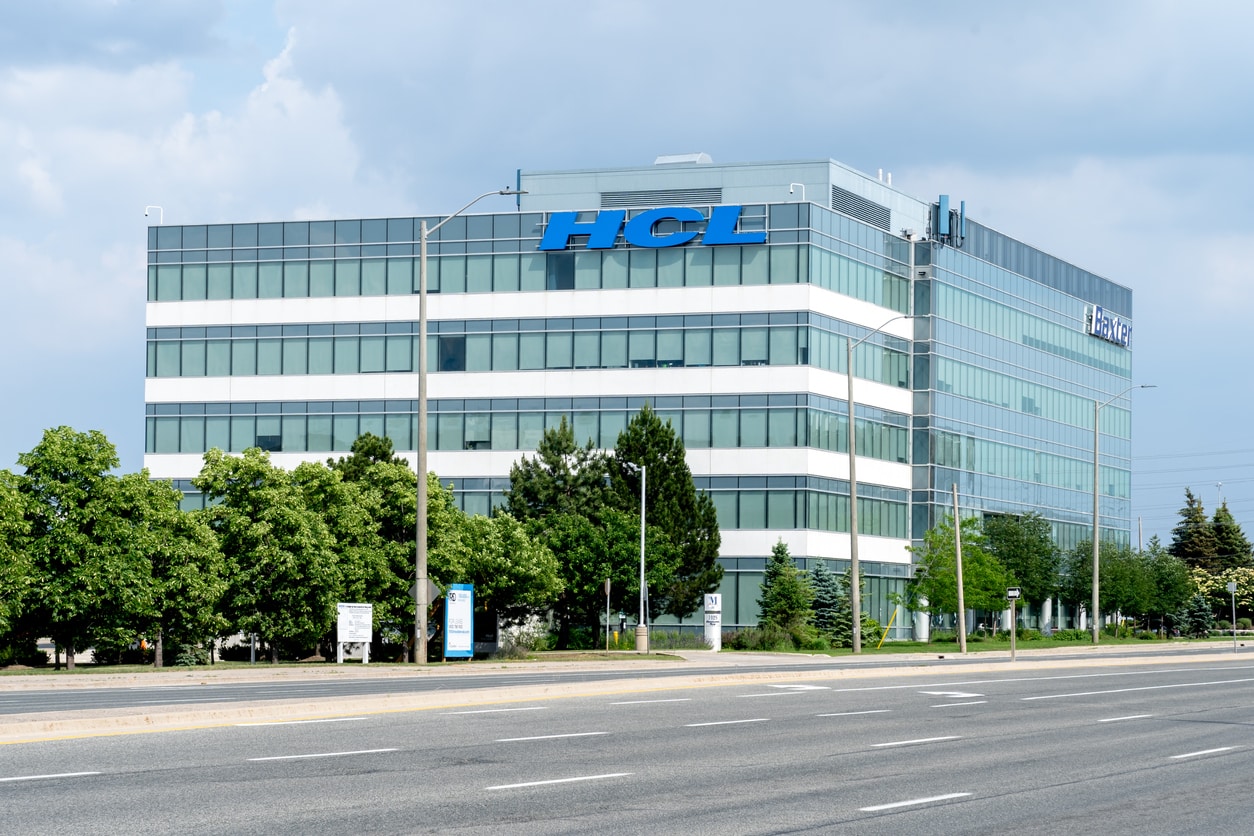Introduction
Microsoft Corporation is an American multinational technology company with headquarters in Redmond, Washington. It develops, manufactures, licenses supports, and sells computer software, consumer electronics, personal computers, and services. Its best-known software products are the Microsoft Windows line of operating systems, the Microsoft Office suite, and the Internet Explorer and Edge web browsers. If you want to get into top MNCs, check out some of these general Microsoft interview questions and courses on Interview preparations.
Top 50 Microsoft Interview Questions
What Do You Understand By Software Engineering?
Software engineering refers to the function of the structured and controlled method applied for developing, operating, and maintaining software. Where software is defined as a collection of integrated programs and engineering can be defined as an application of scientific and practical knowledge for, inventing, designing, building, maintaining and improving frameworks & processes.
Define Framework?
A framework can be defined as a code structure in which generic functionality is provided by software that can be selectively replaced by additional user-written code to provide application-specific software.
Explain Software Re-engineering.
Software re-engineering is a process of software development that is executed to improve the maintainability of a software system. Re-engineering defines examination and modification for the reconstitution of the system in a new form.
List The Main Categories Of Software.
The main categories of software are serial wise listed below.
- Web Applications
- Artificial Intelligence software
- System software
- Application software
- Embedded software
- Scientific software.
Can You Tell What Is The Major Role Of The System Engineering Model?
The major role of the system engineering model is to achieve the following:
- Defining the processes to provide needs of view.
- Representation of the behaviour of process and assumption.
- To specify the Exogenous and Endogenous Input.
- Representation of all Linkages to enable an engineer to better understand the aspects.
Explain What Challenges You Can Face In The Software?
The following challenges can be faced in the software:
- Duplication of legacy systems.
- Heterogeneity challenge
- Challenge of delivery process times.
What Is The Role Of A Software Project Manager?
Controlling the software development project is the sole responsibility of a software project manager. The successful completion of a project entirely depends upon the way he performs the project planning, progress monitoring, and communication. In addition, the checking of the risks and resources for timely delivery of the project cost control and quality constraints, all are included in his responsibilities.
What Is Software Scope?
Software scope is a specific boundary that includes all kinds of activities that executes for developing and delivering software products. Further, this also defines the delivery of functionality and artefacts as a part of the software including identifying the product working and time estimation by the use of predefined formulas.
Explain Change Control
The function of the change control is to ensure that all the modifications made into the software system are consistent and built keeping organisational rules and regulations in mind.
What Do You Mean By Software Prototyping? List Some Of Its Benefits.
Software prototyping is meant for the rapid development of software for validating the requirements.
a) The following are the benefits of software prototyping:
b) To develop system specifications the prototype services are considered as the base.
c) The quality of design can be changed.
d) The system can be controlled easily.
e) Reduction in the development efforts.
f) The usability of the system can get advanced.
How Many Prototyping Methods Are In The Software Process?
In the software process, the following prototype methods are used:
Evolutionary Prototyping: In this type of prototyping, the first initial prototype is arranged and then it is corrected until the final stage using several phases.
Throw-away Prototyping: A rough practical implementation of the system can be achieved with this method. This implementation can be used to find the requirement issues. After that, the system is then developed by the use of various engineering paradigms.
What Are The Advantages Of Evolutionary Prototyping?
Evolutionary prototyping has the following advantages:
a) With the help of evolutionary prototyping, the delivery of the working system becomes very fast.
b) The engagement of the user with the system increases while developing the system.
C) The system is becoming more effective to meet the satisfaction of the customers.
d) The specification, design and implementation all work in the same manner.
What Can You Understand By System Context Diagram (SCD)?
The basic use of the system context diagram is to create a data boundary between the system being implemented and the environment in which the system is operated. This also has the capability of explaining all external procedures, external consumers, and entities that communicate across the customer interface.
What is the role of CMM?
CMM (Coordinate Measure Machine) can be referred to as a device or machine that is used in the measurement of the physical geometrical characteristics of an object. This machine can be handled manually by an operator. The measurements are specified by a probe that is attached to the third moving axis of this machine.
What Is Modularization?
Modularisation is one type of method by which a software system is divided into discrete modules. Modularisation aims to create a flexible system that can create different requested configurations with the reduced number of unique building blocks needed to do so. These modules are expected to perform the task independently.
Define the term cohesion
Cohesion can be defined as the expression of the parallel functional strength of a section. This is mainly a natural extension of information hiding. It performs a single task that needs little integration with other components.
Define the following terms
a) Stub
A stub can be defined as a minimal implementation of an interface that generally returns hardcoded data.
b) Mock
Mock can be defined as the verification of the outputs against expectations. All these expectations are set in the test.
How Can We Assure That The Code Is Secure And Fast?
In software, development security is generally referred to as the topmost security. So, in case the execution of the program is slow then try to find reason outways to its time complexity.
What Do You Understand By The Term Debugging In The Software Development Process?
Debugging is one type of process in software development that is used to remove errors from the program. Its role is very important in performing successful software testing.
What Is The Difference Between Verification and Validation Of Software?
Verification can be defined as the set of activities that are carried out to ensure that software implements a specific function.
Whereas, validation is a set of activities that function to ensure that software is created as per the requirements of the customer.
Tell How Many SDLC Models Are Available?
Some of the top SDLC models are as follows:
- Waterfall Model
- Spiral Model
- The Big-bag model
- Iterative Model
- V- Model
List Out The Advantages Of An Incremental Model.
The advantages of the incremental model are mentioned below.
a) The acceptance of the incremental model is not dependent on the number of users included in the project, even in the case of fewer users, it can be accepted.
b) It has the capability of handling the technical risks for each increment.
c) It is possible to supply at least the core product for a minimal period.
List The Limitations Of A Classic Life Cycle Model?
The limitations of a classic life cycle model are as follows:
a) Real projects hardly follow the sequential flow and the reason is iteration which creates a problem.
b) It is difficult for the customer to state all requirements.
c) The working version of the program is not available.
Explain The Limitations Of The RAD Model?
The limitations of the RAD model are as follows:
a) To create enough teams, there is a requirement for a sufficient number of human resources.
b) Both developers and Users are not committed and this becomes the reason for the failure of the system.
c) Since it is not an accurate Modularized building component, therefore it raises a problem.
d) it is not applicable for dealing with technical risk.
What Are Internal Milestones?
The internal milestones can be referred to as the significant and quantifiable attributes of progress. These are the standard methods in the project which are used to ensure that the work is going on the right path. This is controlled by the project manager.
Define The Term A Feasibility Study.
The feasibility study can be defined as a method that is used to find out that the software project development is how practical and beneficial will prove to the organisation. To know the economic, technical, and operational feasibility of the project, a study is regulated by the software analyser.
Economic. Training and additional costs, tools costs, and benefits of the project are contained in it.
Technical. This is for the evaluation of the technical aspect.
Operational. In this, the analyst is required to examine the smooth adjustability of the organization to the changes done according to the demand for the project.
What Do You Mean By Software Requirements?
Software requirements can be understood as a functional explanation of a proposed software system. That means the description of the features and functionalities of the target system.
The expectations of the users from the software product are provided and delivered via requirements.
List The Software Maintenance Types.
The following are the types of software maintenance:
Corrective Maintenance. This maintenance is done to resolve errors spotted by the users.
Adaptive Maintenance. This type of maintenance stops the changes in the hardware and software environment where the software works.
Perfective Maintenance. In this type of maintenance, the modifications are implemented in the existing or new requirements of the client.
Preventing Maintenance. The task of this maintenance is to take appropriate measures in advance to avoid future problems.
Explain Agile Software Development
It is the process that concentrates on incremental delivery by the team as a whole. In this process, to complete the project in the timeframe, it is divided into small chunks. The time frame is also known as sprints. Sprints can be defined as a set period in which specific work is required to be completed and made ready for review.
However, in software development, agile practices involve finding out the requirements and developing solutions with the collaborative effort of self-organizing and cross-functional teams and their customers/end-user.
Explain software testing
Software testing is one type of process that is used for the evaluation and verification of the performance of a software product or application.
Software testing is beneficial in terms of preventing bugs, reducing development costs, and improving performance. The main purpose of this test is to provide high-quality software to the users.
Explain SRS
SRS (Software Requirement Specification) is one type of document which captures all the functional and non-functional requirements of a product. However, all SDLC models don’t need to follow the SRS document. It means to say that, some models capture requirements in the form of user stories and others in the form of excel sheets.
Explain the Waterfall model?
The waterfall model is a sequential model in which the next phase starts only after the completion of the first phase. For example, the testing phase will not start until the development phase is completed and the maintenance phase will start only after the completion of the testing phase. The types of phases in the waterfall model are as follows:
- Requirements
- Design
- Coding
- Testing
- Maintenance
Explain the following
a) Black-Box testing
The function of this testing is to check if the desired outputs are produced or not when valid input values are given. However, the actual implementation of the program is not verified by it.
b) White-Box Testing
The function of this testing is to check desired and valid output when valid input is provided and also checks if the code is implemented correctly.
What Do You Mean By Stamp Coupling?
Stamp coupling can be referred to as the portion of the data structure that is passed using the module interface.
Explain Common Coupling
Common coupling occurs in the case of several modules having access to the same global data. However, it can lead to uncontrolled error propagation and unforeseen side-effects when modifications are made.
What Do Understand By External coupling?
External coupling occurs when an externally imposed data format, communication protocol, or device interface is shared by two modules.
Explain V-Model
V-Model stands for the verification and validation model. It is an addition to the waterfall model. V-model is also a sequential model. In this model, every phase of development is linked with a corresponding testing phase.
What Do You Understand By Responsive Design?
The responsive design is used to create Websites. Websites use media queries for targeting breakpoints that scale images, wrap text, and adjust the layout. Because of this, the website can be reduced to fit any size of screens such as on tablets, mobiles, or desktops.
What Is The Difference Between Fixed And Fluid Layouts?
Fluid layouts are also referred to as liquid layout that uses percentage as relative indicators for widths. In this type of layout, the width of the entire page is flexible depending on how wide the viewer’s browser is.
Whereas, in the fixed layout, also known as static layout, the width of the entire page is set with a specific numerical value. The websites that are built using fixed design depend on fixed pixel widths. It is an outline with a fixed width, measured in pixels.
What Do You Understand By Stack?
A stack can be defined as a linear data structure with basic operations. The basic operations are as follows:
Push. This can be defined as the insertion of an element to the stack from the top.
Pop. It refers to the removal of the latest element added to the stack.
Some implementations of the stack provide access to peek. Peek is a function for enabling you to view an element in a stack without changing it.
Peek uses a last-in, first-out structure so the last element added to the stack is the first element that can be removed. Lastly, they are generally implemented with an array or a linked list.
Describe Web Workers In HTML5?
Since JavaScript is single-threaded therefore concurrency and simultaneous operations are hard to execute and must be simulated with functions like setTimeout and setInterval.
To help in this, Web workers in HTML5 run background scripts in a web application without blocking changes in the UI.
They help in simulating multi-threading in JavaScript to provide access to simultaneous scripts to run.
Define Microservice Approach And Monolithic App
Microservice Approach. It is an approach where a single application is developed as a suite of small services. Each running in its process and communicating with lightweight mechanisms, often an HTTP resource API.
Monolithic App. A monolithic application can be defined as a single-tiered software application in which the user interface and data access code both are joined into a single program from a single platform. However, this is one type of self-contained and independent from other computing applications.
Where The Protected Class-Level Variables Are Available?
Protected class-level variables are available for any class within a package and in addition, only for that sub-class that is obtained from the base class.
What Is An Important Thing For Testing Code Quality?
The unit testing framework is considered very important for testing the quality of the code.
Is Maintaining Software Expensive?
It is dependent on the software development process. If the development process is followed accurately then the software maintenance will never be expensive.
Explain Tags And Branches?
Tags are being used for versioning releases which are temporary holding places for doing such types of things. Whereas, branches are deleted at the time when those changes are merged into the trunk.
What Do You Mean By Baseline?
To track the overall project delivery, the baselines are put forward by the project managers. The overall tasks listed under a phase or stage are tracked with the placement of these baselines. Further, with the help of baselines, the project managers can monitor the overall execution of a project.
Explain What Is A Data Dictionary.
A data dictionary is also known as metadata. It is used to capture the information related to naming conventions of objects and files utilized in the software project.
Explain Blocking And Non-Blocking Calls.
Blocking Calls
Blocking calls can be explained as those calls where the execution of additional JavaScript has to wait until a non-Javascript operation completes or finishes. synchronous action is one type of example of blocking calls.
Non-blocking Calls
Non-blocking calls are referred to as those calls that can execute asynchronously that provides a performance advantage.
What Is The Difference Between An Array And A Stack?
An array can be said to be a collection of items that are stored at contiguous memory locations. Its structure is not fixed. The same type of multiple items is stored together. With this, it is easier to calculate the position of each element by simply adding an offset to a base value.
Whereas, a stack is a type of linear data structure where different types of elements are stored. In a stack, elements can be inserted and deleted only from one side of the list, called the top. A stack follows a strict LIFO approach that means the last element in and the first element out.
Conclusion
The top Microsoft software engineer interview questions that are best for both freshers and professionals have been covered in the above paragraphs.
Becoming a Microsoft Software Engineer will enhance your technical skills and knowledge and also will help you secure your career.
Meaning says that this role is very important for all types of IT organizations in which you can learn and have a chance to achieve many advanced levels. That’s why you must try to grab the role of a software engineer.
Use the above questions to prepare yourself for the interview and be free to share your experience as well as your doubts in the comments section. This will give us the insight to provide you with more and more valuable information.






